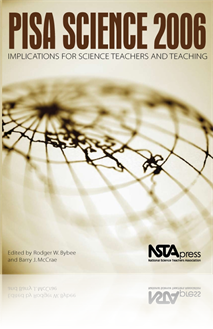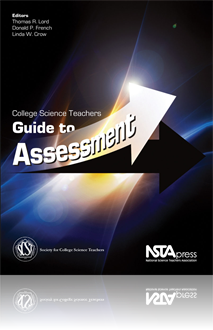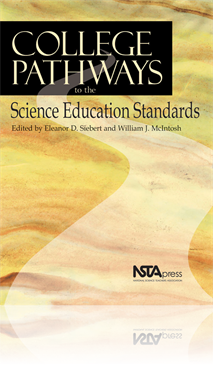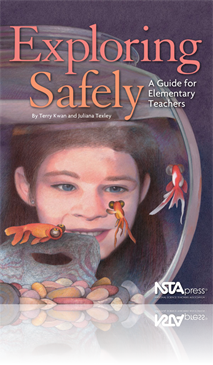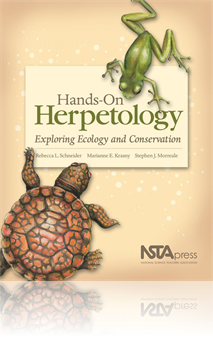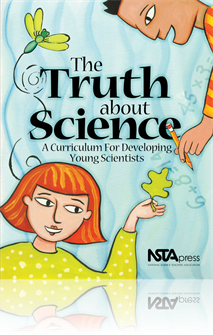All Resources
eBook
Inquiry: The Key to Exemplary Science (e-book)
Science teachers aiming to foster inquiry in their classrooms will find the sixth title in the Exemplary Science monograph series, Inquiry: The Key to Exemplary Science full of helpful advice and new techniques....
eBook
Professional Learning Communities for Science Teaching: Lessons From Research and Practice (e-book)
What would it take to move your school or district closer toward a culture that supports and sustains professional learning communities (PLCs)?...
eBook
Reforming Secondary Science Instruction (e-book)
Science education reform can seem a daunting task to high school science teachers. So, you might ask, why should I be bothered? The answer is that today’s students simply do not have the skill sets necessary for life in our global economy....
eBook
40 Inquiry Exercises for the College Biology Lab (e-book)
Drawing from the author’s own work as a lab developer, coordinator, and instructor, this one-of-a-kind text for college biology teachers uses the inquiry method in presenting 40 different lab exercises that make complicated biology subjects accessi...
eBook
Activities Linking Science With Math, 5-8 (e-book)
Science does not exist in a vacuum and, therefore, shouldn’t be taught that way. In that spirit, Activities Linking Science With Math, 5-8, is a hands-on guide for preservice and inservice elementary and middle school teachers who want to connect s...
eBook
Interpreting Assessment Data: Statistical Techniques You Can Use (e-book)
Are you properly evaluating the results of the tests you give to students? Can you explain the difference between classroom assessment and standardized assessment? Are you on solid ground with your grading system? Demystify—and even use—statistic...
eBook
Extreme Science: From Nano to Galactic (e-book)
Whether we are imagining microbes or mammoths, dinosaurs or diatoms, molecules or stars, people of all ages are fascinated with the very large and the very small. New technologies have enabled scientists to investigate extremes of science previously ...
eBook
PISA Science 2006: Implications for Science Teachers and Teaching (e-book)
What must we teach students to enable them to fully participate in a world community where science and technology play an increasingly significant role? That’s a question that science educators continually face and that the Programme for Internatio...
eBook
College Science Teachers Guide to Assessment (e-book)
What is assessment? How do you assess your students’ progress? How do they assess themselves and their peers? How do you assess the effectiveness of your own teaching? College Science Teachers Guide to Assessment provides busy professors wit...
eBook
College Pathways to the Science Education Standards (e-book)
This one-of-a-kind book applies the Standards, written for K-12 classes, to the college level. Designed for postsecondary science content teachers, science educators, and administrators, this book shows how to implement all six areas of the Standards...
eBook
Exploring Safely: A Guide for Elementary Teachers (e-book)
Take the fear factor out of science lessons. This easy-to-digest book relieves many of the safety worries that come with teaching science in elementary school. The emphasis is on positive options for heading off potential hazards, from handling speci...
eBook
Hands-On Herpetology: Exploring Ecology and Conservation (e-book)
Plentiful, diverse, and readily available, these animals—known in science as “herps”—are also perfect for teaching students about biology, ecology, and conservation, including problems affecting both amphibians and reptiles. This highly re...
eBook
The Truth About Science: A Curriculum for Developing Young Scientists (e-book)
The truth is: Valid research demands more than beakers and Bunsen burners-- much more. So give kids the lowdown on how real scientists work. This engaging book shows you how to develop students’ creative and critical thinking skills to make qualita...
Book Chapter
This engaging lesson simultaneously involves animals, flowers, mathematical patterns, and art. Students will learn to discern between radial symmetry, bilateral symmetry, and asymmetry by observing and classifying objects, shapes, and photos and by d...
Book Chapter
Calculating the Speed of Sound
Who hasn’t seen a dramatic flash of lightning, only to hear the dramatic “crack” of thunder several seconds later? But why does the thunder reach our ears after we see the lightning? Or, why does the sound of a high-flying jet airplane passing ...
Book Chapter
Exploring the Dynamics of Temperature
Would your students like to take care of a penguin? To be a “penguinsitter,” they would have to know what conditions that bird needs to survive. One important factor would be temperature. In this activity, you will challenge student groups to pro...
Book Chapter
Observing the Effects of Acids and Bases
Combining acid/base chemistry, cell biology, and quantitative research methods, this “egg-ceptional” activity promotes a truly interdisciplinary perspective. First, students find out what effect acids and bases have on calcium-based substances su...
Book Chapter
Discovering Sand and Sand Paintings
This activity blends social studies and art with math and science. First, students will explore the visible characteristics of sand, and then they will make Navajo-style sand paintings with paper, glue, and colored sand. In the process, they will hon...
Book Chapter
Heat Exchange in Air, Water, and Soil
The Earth is composed, at least at the surface, of soil/rock, water, and air. How do the heat exchange properties of these three very different substances compare, and what effect, if any, do they have on climate and weather? This activity represents...
Book Chapter
Developing a Model of the Earth’s Inner Structure
How much do your students know about the Earth’s interior? This activity will provide them with a hands-on experience, as well as with appropriate terms and concepts. Students discover what makes a good model as they first choose a fruit or vegetab...
Book Chapter
Investigating Perception and Illusion
For a motivating and baffling experience, try this investigation of perceptual illusions and their causes. It allows students to observe, analyze, and compare a variety of optical illusions, and also to create their own optical illusions with pencil,...
Book Chapter
Determining the Relationship Between Height and Hand Length
For a motivating and baffling experience, try this investigation of perceptual illusions and their causes. It allows students to observe, analyze, and compare a variety of optical illusions, and also to create their own optical illusions with pencil,...
Book Chapter
Exploring Cellular Shape Using Area
In this activity, students are challenged to maximize the area enclosed within the limited perimeter of a string “cell membrane,” using area formulas as they do so. This is an open-ended activity that will challenge groups of students to apply ma...
Book Chapter
Surveying Science and Mathematics on the Internet
In this activity, students will explore the internet for interesting science and mathematics websites. They will be guided by an activity sheet as they identify, summarize, analyze, reflect on, and compare websites. After reviewing their sites, stude...
Book Chapter
Please Pass the Pollen: Flowering Plants, Pollination, and Insect Pollinators
This high-interest activity provides an opportunity for students to learn more about the natural world while they hone their investigatory skills. In the activity, student groups investigate pollination, insect behavior, and flower structure. They wi...



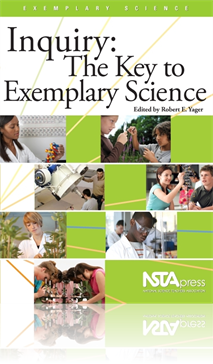
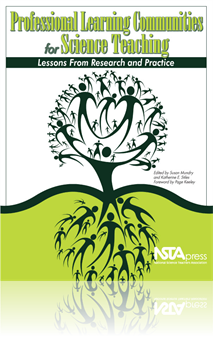

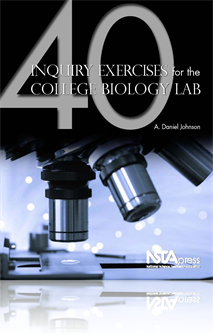
.jpg)


